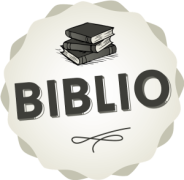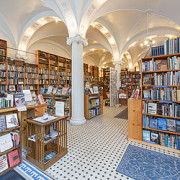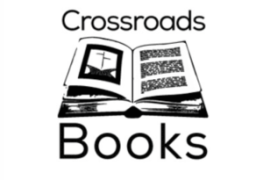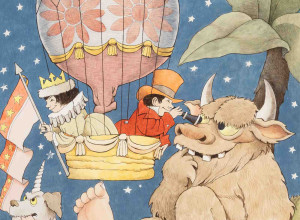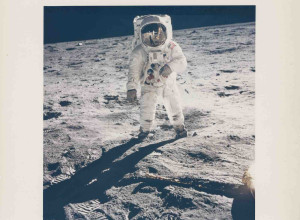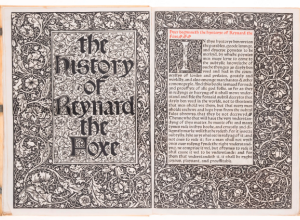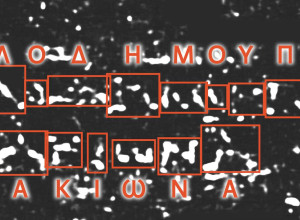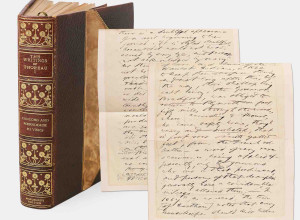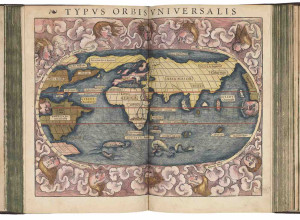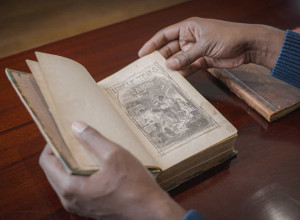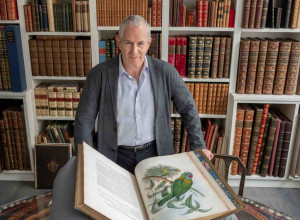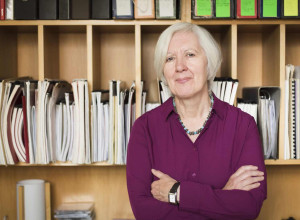Bright Young Collectors: Tom Zille
 Our Bright Young Collectors series continues today with Tom Zille of Berlin, Germany who collects English and German interwar literature. Tom is a member of the Half-Crown Club of book collectors and has written about his collecting in The Book Collector and other places.
Our Bright Young Collectors series continues today with Tom Zille of Berlin, Germany who collects English and German interwar literature. Tom is a member of the Half-Crown Club of book collectors and has written about his collecting in The Book Collector and other places.
Where are you from / where do you live?
I was born in Leipzig (erstwhile printing and bookselling capital of Germany), but I now live in Berlin.
What do you study at University?
After training as a bookseller in Leipzig, I studied English and German Literature at Berlin and Cambridge. I am now reading for an M.A. in English Literatures at the Humboldt University of Berlin. Brexit permitting, I shall go back to Cambridge afterwards.
Please introduce us to your book collection. What areas do you collect in?
I collect English and German literature of the interwar years, mostly first editions. Theoretically, all books published between 1919 and 1939 are "eligible for inclusion." The main criterion is that they be characteristic of their period, be it with regard to their design, literary style, or social and political aims. Many of the books are concerned with the wars, of course, either discussing the past one or in some ways anticipating the war to come. Over the years, the focus on Britain, the US, and Germany - which is dictated by my limited knowledge of languages - meant that I became increasingly interested in how books reflected the countries' relations and their interest in each other. Carl-Erdmann Pückler's Einflussreiche Engländer ('Influential Englishmen'), published in 1938, is an interesting example of that kind, as is Sinclair Lewis's 1935 novel, It Can't Happen Here, which tells the story of a fascist seizure of power in the US. The latter has a particularly striking dust jacket, which on the front, looming behind the title, sports a bright red image of the fasces. This is the kind of book I am always looking for, one that is intriguing not only for its design but also for its narrative.
Nonetheless, writers who consciously turned their backs on politics, carving out an aestheticist niche for themselves, are by no means less fascinating. Probably the most beautiful book in the collection is Stefan George's Das Neue Reich ('The New Realm'), a volume of poetry which was published in 1928. It is printed in a handsome yet eccentric type which the poet himself had designed, and which combines the best of its classical and medieval sources. While each of these books is a wholly characteristic example of what the collection contains, the next one might look completely different.
Perhaps motivated by certain developments within the interwar collection, I have more recently started to collect books that shed light on early Anglo-German literary relations, particularly in the eighteenth century. Most of these are German translations of English novels, but I am also looking for travel accounts and histories from that period.
 How many books are in your collection?
How many books are in your collection?
The interwar collection comprises sixty books now, about two thirds of which are first editions. There are also several shelves of secondary literature on the subject. The 18th-century collection at the present time contains only a dozen volumes, but like the first one, it is growing increasingly fast.
What was the first book you bought for your collection?
Back in 2009, the first book was a first edition of Stefan Zweig's Der Kampf mit dem Dämon, published in 1925 (the English translation, The Struggle with the Daimon, was published in 1930). It contains an interesting collection of essays on Hölderlin, Kleist, and Nietzsche, but it was also the first book I bought out of aesthetic and historical interest, rather than because I wanted to read it at that time. Its sober cover design and typography seemed so quintessentially modernist, and what is more, Zweig had dedicated his essays to Sigmund Freud. In a way, it set many of the parameters for the collection: I look for books that in some way epitomise developments of the period, I am still quite keen on nonfiction, and I generally try to get the first edition if I can.
How about the most recent book?
Most recently, I bought an early German translation of Sterne's Sentimental Journey published in 1771. Sterne had an enormous influence on eighteenth-century German literature, which is why this is a particularly welcome addition to the collection.
And your favorite book in your collection?
I think my favourite one is Bruno Vogel's Es lebe der Krieg! ('Long Live the War!'), an early German anti-war book. I have a second edition copy published in 1925 which is quite rare, but I am still looking for an affordable first. The stories, which draw on Vogel's own experience as a soldier, present the horrors of the war in an absolutely relentless manner, and so do the expressionist woodcuts by Rüdiger Berlit that were used to illustrate the text. Immediately after the book's publication, Vogel became embroiled in a lawsuit, and the third and fourth editions came heavily censored. It is a privilege, therefore, to be able to read the book in its original form.
Best bargain you've found?
That would be my first edition of Wolfheinrich von der Mülbe's Das Märchen vom Rasierzeug oder die Zauberlaterne, a minor fantasy classic first published in 1937. The story is a highly original parody of classic German fairy tales and the conventions of chivalric romance, with ironic references to the modern age interspersed throughout the text. First editions of this book are few and far between, and it took me several years to find one. I bought it online from someone who clearly didn't know what they were selling.
How about The One that Got Away?
There have been many over the years. Most recently, a signed photography of Ivy Compton-Burnett was auctioned on Ebay, and I was too timid to offer an appropriate amount of money, not least because it was the first time I was interested in a picture. Doubtlessly, that one is going to haunt me for some time.
What would be the Holy Grail for your collection?
There isn't really the one book I long for. First editions of A.J.A. Symons's The Quest for Corvo (1934) or Compton-Burnett's A House and Its Head (1935) with interesting inscriptions from the authors could send me into rapture. But the best finds are the ones you were never looking for.
Who is your favorite bookseller / bookstore?
I enjoy making discoveries, which is why an all too well-informed bookseller tends to spoil the hunt, not to mention the prices. My ideal bookshop is something halfway between Quaritch and Ebay. For instance, even though they have seen better times, I always stop by the shops on Charing Cross Road whenever I am in London.
Images Courtesy of Tom Zille, portrait of Tom copyright Renate von Mangoldt





